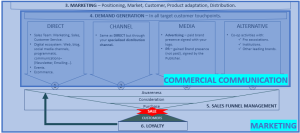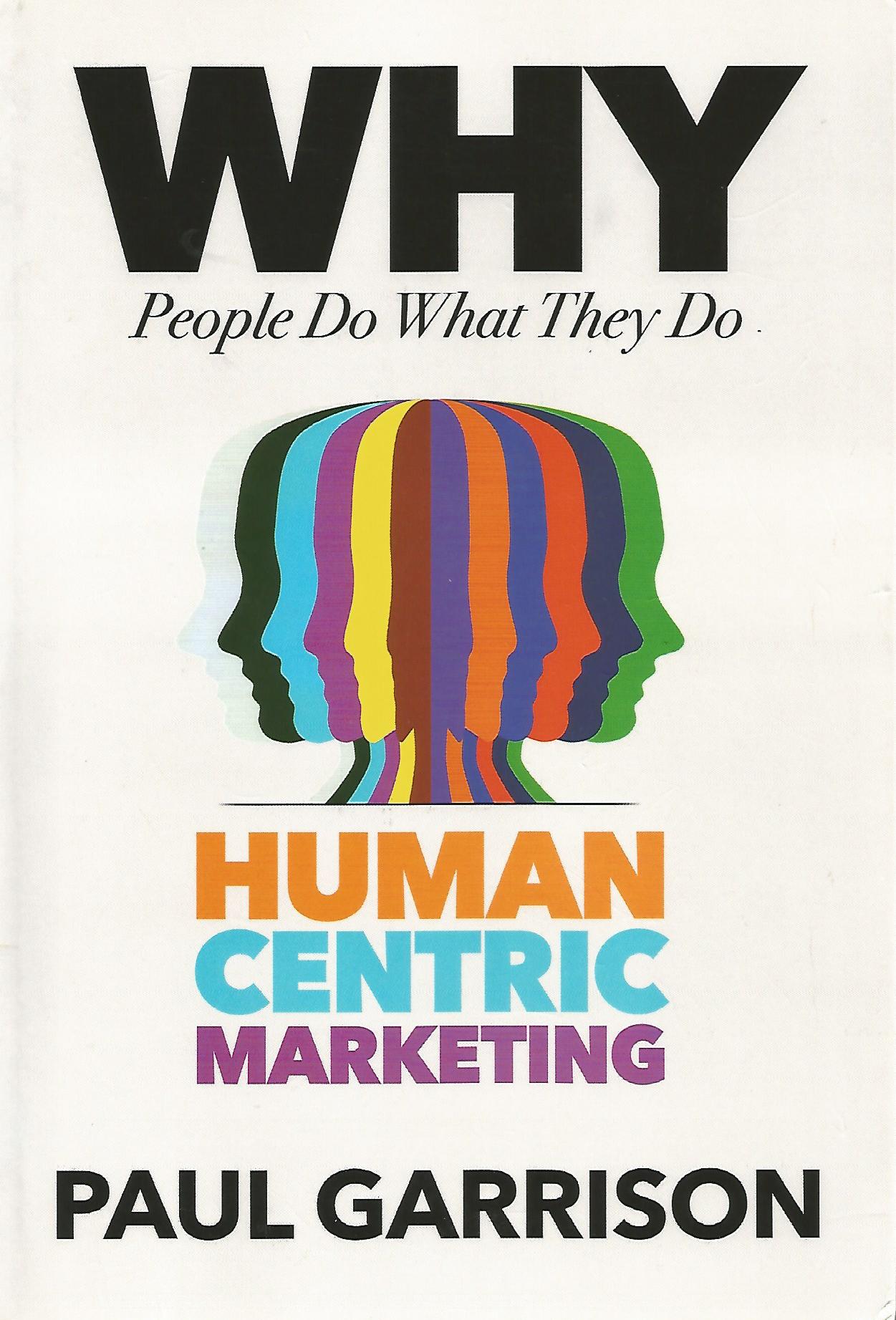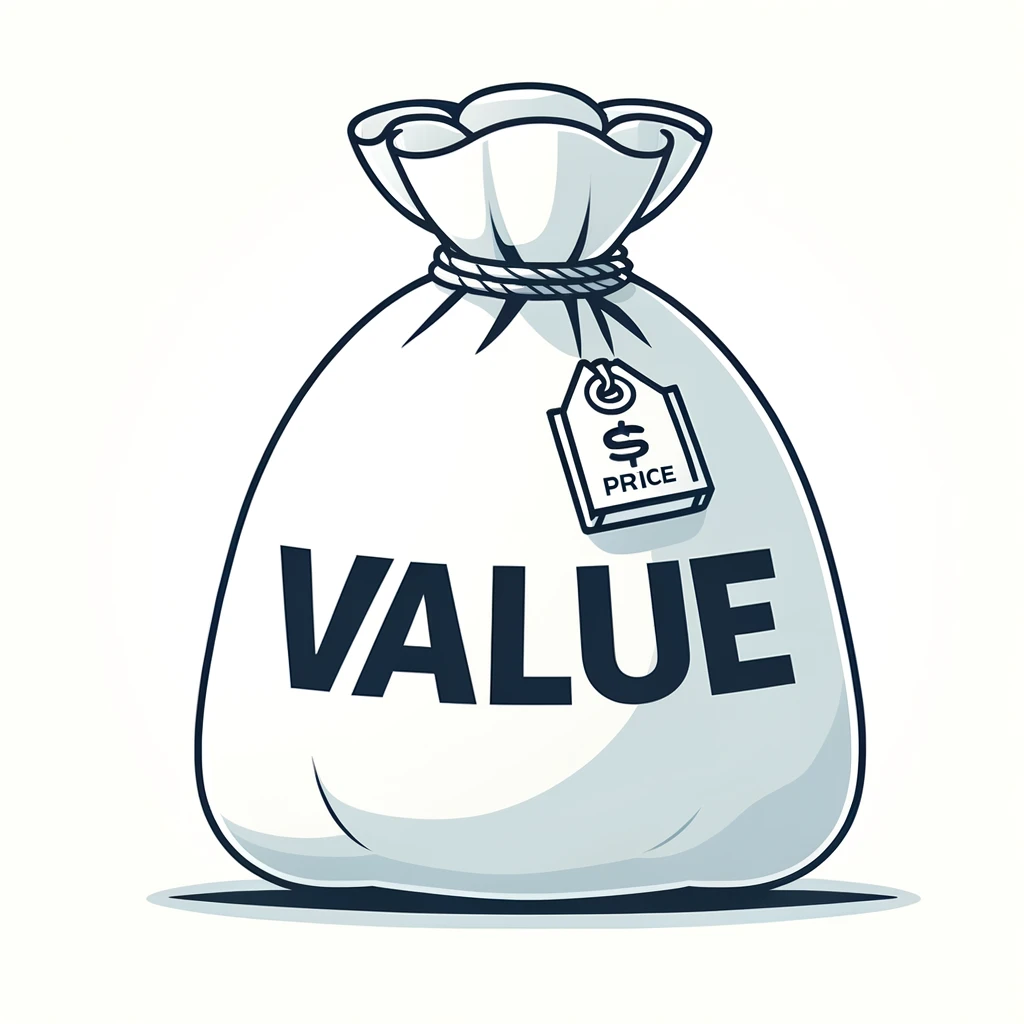by Diego San Román

The confusion between “doing marketing” and “engaging in commercial communication” often stems from a partial or simplified understanding of marketing, which can have negative consequences on a company’s sales.
Marketing encompasses everything a company or organization does to get more people to buy or support its value proposition more frequently, for a higher exchange value (usually money), with a greater contribution margin (the difference between revenue and the cost of the proposition sold), while also increasing brand value with each interaction with customers and stakeholders.
Marketing involves all the necessary stages to create and manage value throughout the customer lifecycle (awareness, consideration, and purchase). However, in practice, many people think of marketing primarily in terms of communication for several reasons, including:
- The most visible and tangible marketing activities are typically advertising campaigns, promotions, and commercial communication. These are the final manifestations of marketing, so the general public—and even many professionals—tend to equate them with “marketing,” overlooking the broader range of actions that define it.
- As illustrated in the graphic at the end of this article, the strategic marketing plan involves a much wider array of activities and functions. Communication, however, remains a critical vehicle for executing any business strategy. The communication plan is the most direct way a brand interacts with its customers, generating awareness, consideration, and ultimately, purchase.
- In many businesses, especially those where short-term results are crucial, companies often focus on tactical actions that yield immediate outcomes (lead generation and sales), reducing their marketing focus to communication and sales efforts without considering the fundamental steps that should precede any comprehensive commercial activity.
- Many managers or internal teams fail to fully grasp marketing as an integral process that includes all the phases outlined in the graphic. For them, “marketing” has become synonymous with “advertising” or “content creation.”
Marketing’s purpose is to drive sales, but its role goes beyond communication. Communication, when not preceded by marketing, is ineffective at achieving awareness and consideration (the two necessary and sequential stages before a purchase). Marketing involves creating value at every step of the customer lifecycle—from product definition and positioning to retention and advocacy. The key is for companies to understand the importance of strategic marketing and how every action, from market research to customer loyalty, forms part of a broader ecosystem that affects both short-term and long-term results.
Moreover, the sale is the outcome of properly executing the marketing process that leads to it. When marketing is implemented comprehensively and strategically, its goal is to attract, convert, and build customer loyalty. The sale is just one of the key moments in this cycle.
Marketing creates the right environment for sales to occur. It defines the brand’s positioning, develops the value proposition, identifies the target audience, and generates demand. When done correctly, it creates a framework where the sale happens naturally. The customer perceives the value, becomes interested, considers the offer, and ultimately makes the purchase.
Everything that happens before the sale—from brand awareness to trust-building—is marketing. Effective marketing ensures that the customer is ready to make a purchasing decision. In other words, marketing not only defines and identifies potential customers, but it also “warms them up,” making the sales process smoother.
While sales are the tangible result of effective marketing, they are not the end of the process. Marketing is also responsible for the post-sale experience, which drives repurchase and referrals, extending the customer lifecycle and maximizing value beyond the transaction itself.
The different phases of the marketing process—awareness, consideration, and decision—are all geared towards turning a prospect into a customer. The sale marks the point when the prospect takes action, but it is preceded by a series of carefully designed activities meant to influence that decision.
The factors that contribute to successful sales through “doing marketing”, and their sequential order, are detailed in the final figure and include additional elements such as: ensuring the sales team’s effectiveness at each stage, the customer experience, product availability, perceived value (both functional and emotional), and external factors like the economic environment or market trends.

What is MARKETING and what is COMMERCIAL COMMUNICATION.
As marketers we like to believe we are consumer centric in everything we do, but the reality is that we often get lost in processes, tools, and procedures that are more internally focused on who we are as an organization, what we are doing, and what we want to do rather than externally focused on […]
With almost 25% participation in life, all life, and consequently in purchases, all purchases in this country (Spain), those over 65 years of age could, legitimately, initiate a massive protest action against advertising, that is, against advertisers, agencies and media, because of the fondness of treating us mostly as if we were mentally retarded. nerd-sentimental […]
Character is at the core of who we are as individuals and as a society; it’s the foundation of human behavior.
Arguing over the price in a buy-sell negotiation is a waste of time, as the focus should be on the perceived value of both parties. The key to a successful transaction is understanding and agreeing on the value each party gets from the trade. Value is not measured only in monetary terms. Customers buy products […]






